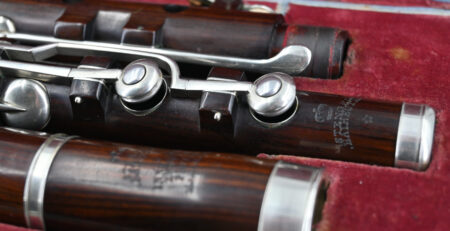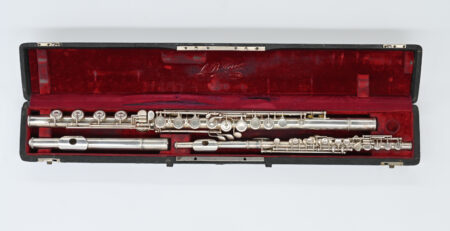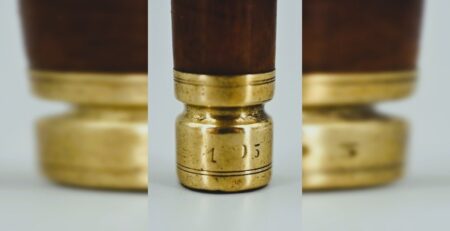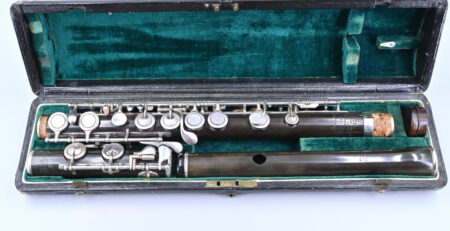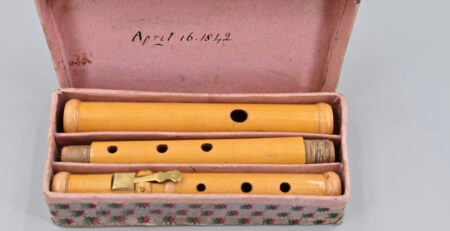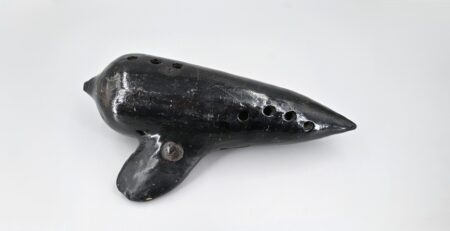The Scherers – rich and royal
The name Scherer conjures up images of beautiful instruments, crafted in ivory that were definitely fit for a king. Who were these famous instrument makers and where did they work? The story is a fascinating one, so read on!
Back to Butzbach
The Scherers were originally thought to have worked out of France, perhaps Paris. The fleur-de-lis stamp on some of their instruments, their elegance and the materials used would lead many experts to think so. However, in 1986, the mystery was solved when the inscription ‘Butzbach’ was found on a Scherer bassoon in New York’s Metropolitan Museum of Art.
Butzbach is a town, north of Frankfurt, in the district of Hessen, Germany. Further research followed to uncover more details about the family.
Johannes Scherer II and Georg Heinrich Scherer – father and son
We now know that two Scherers made woodwind instruments. The literature tells us that Johannes Scherer I (ca 1627-1707) was a turner in Butzbach with a wife and six children. One of his sons, Johannes Scherer II (1664-1722) seems to have worked together with his father and continued the turner trade. After his father died though, he was then listed as a turner and woodwind instrument maker. Johannes Scherer II was a contemporary of great instrument makers such as Peter Jaillard BRESSAN (1663-1731) or Thomas STANESBY Senior (ca 1668-1734).
Georg Henrich Scherer (1703-1778) was the seventh of Johann Scherer II’s children. He had a total of 12! When his father died, he took over the instrument making business. It is not clear if other siblings worked alongside George Henrich. He must have been quite wealthy, buying up more property for the workshop and even, it seems, dealing in wine.

Scherer stamps
A total of sixty-seven Scherer instruments are known to still exist – there may be more undocumented ones. They include forty transverse flutes, ten bassoons, seven clarinets, six oboes, two recorders and two walking stick instruments. The stamps on these instruments are extremely varied and confusing. They have no dates and no other city or town name except for Butzbach on the bassoon in New York. Under the name SCHERER is either a lion rampant or the fleur-de-lys. The lion rampant is actually an ancient symbol of Hessen and thought to have been stamped on instruments bound for ‘German’ type customers or royalty. The instruments with the fleur-de-lys were perhaps for ‘French’ type clientele or the French court. Numbers and letters can also be found on some instruments and it is still not clear today what these markings really mean. The stamps themselves were not always perfectly imprinted. This has perplexed many organologists since the instruments are otherwise masterfully made with absolute precision. Yet as any of today’s woodwind instrument makers can confirm, stamping instruments is extremely difficult on wood – let alone ivory!
Royal clientele
Among the Scherer’s most prominent and famous customers was no other than Frederick the Great (1712-1786), the King of Prussia. He was an avid music lover and accomplished flute player, owning at least seventy flutes. He apparently performed on a Scherer ivory flute which was stolen at the end of World War II from the Musikinstrumenten-Museum in Berlin.

Ivory – the material of choice
Ivory has always been a rare and expensive material – unaffordable for normal people. It was readily available during the times of the Scherers and was used to make very special instruments for even more special and rich people! Butzbach is actually very close to Erbach which is known as the city of ivory carvers.
Ivory as a material is hard and can be worked using very specific methods. It can be polished to give it a very shiny appearance. It’s no wonder that it’s a perfect material for musical instruments, especially woodwinds. Apart from being very breakable, since ivory has a great deal of tension, if it splits, it is difficult to fix.
The sound of ivory is unique. It is bright and distinctive with a cutting, crisp tone. Another bonus is its visual appearance – the audience can see an ivory instrument and knows the instrument and player are very special.
Yet another even more exotic and luxury material was used – narwal tusk. The narwal is a whale that has two teeth, only one of which can develop into a tusk up to three metres long! It is rarer than ivory. In medieval times, it was valued even more than gold because it was believed to actually be the horn of a unicorn and have medicinal properties.

Special instruments
In addition to special design features as well as innovations to the bassoon among others, we can find some very special Scherer creations – including two walking stick instruments. There is a walking stick instrument at the Met made of narwal tusk over one metre long. The upper part is a C flute and the lower part a soprano oboe in C. The reed in hidden underneath the handle of the walking stick. There is also a knob which is removable and reversible. So, with the touch pointing upward, it’s a key for the flute and then when reversed and touching downward, it’s a key for the oboe. Frederick the Great commissioned the instrument as a gift for his finance minister, Julius Freidrich Freiherr von der Horst (1723-1791).
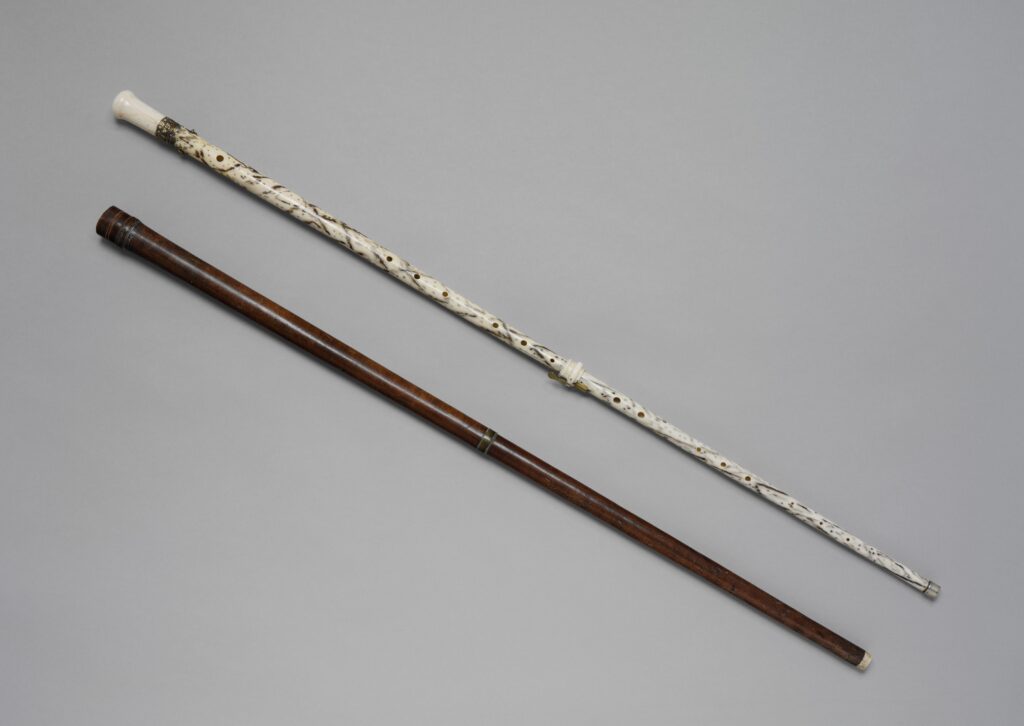
For anyone interested in more details about the Scherer family, the Galpin Society published an article in 1986 entitled ‘The Scherers of Butzbach’, by Phillip T. Young.


